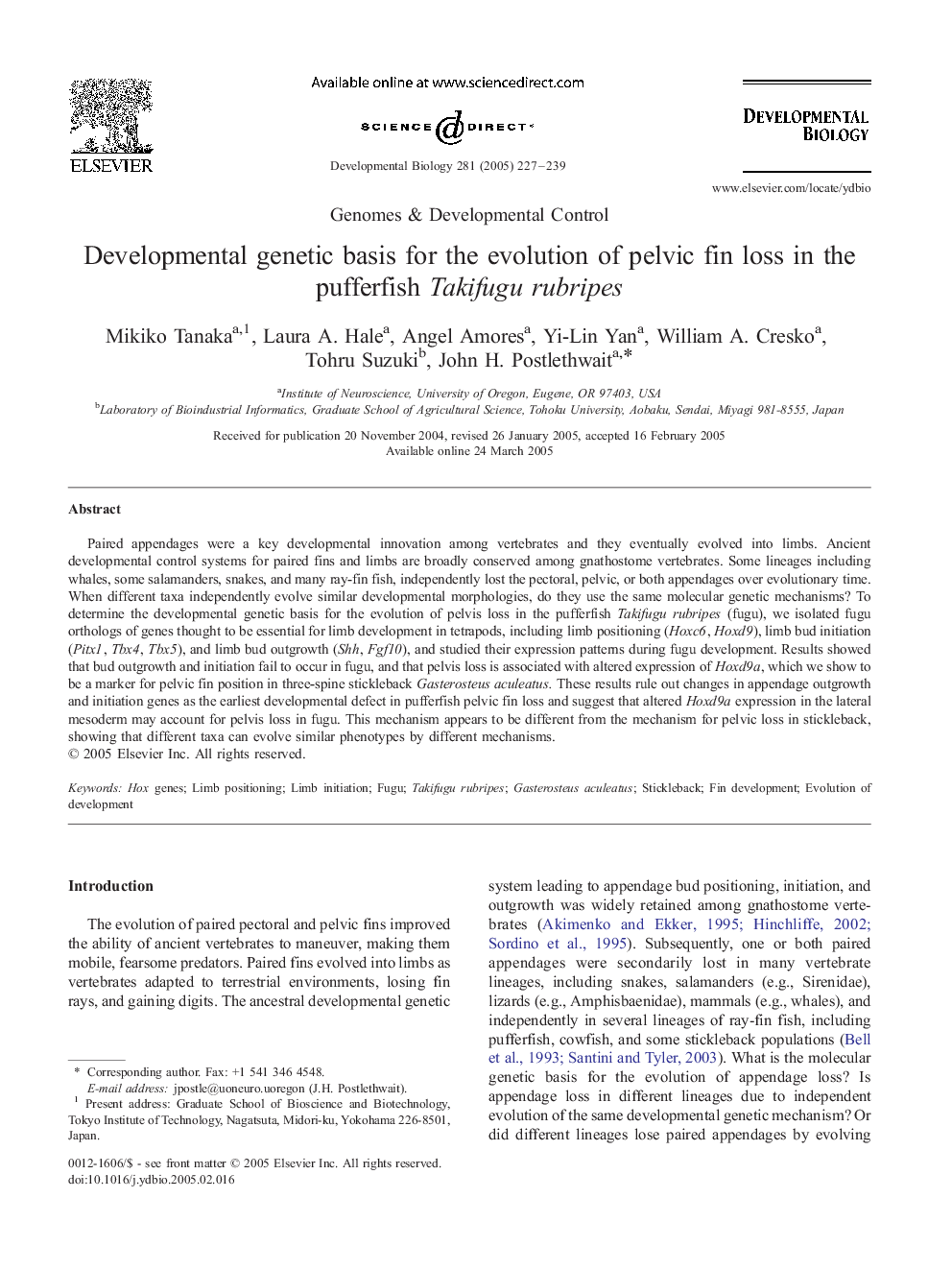| Article ID | Journal | Published Year | Pages | File Type |
|---|---|---|---|---|
| 10933914 | Developmental Biology | 2005 | 13 Pages |
Abstract
Paired appendages were a key developmental innovation among vertebrates and they eventually evolved into limbs. Ancient developmental control systems for paired fins and limbs are broadly conserved among gnathostome vertebrates. Some lineages including whales, some salamanders, snakes, and many ray-fin fish, independently lost the pectoral, pelvic, or both appendages over evolutionary time. When different taxa independently evolve similar developmental morphologies, do they use the same molecular genetic mechanisms? To determine the developmental genetic basis for the evolution of pelvis loss in the pufferfish Takifugu rubripes (fugu), we isolated fugu orthologs of genes thought to be essential for limb development in tetrapods, including limb positioning (Hoxc6, Hoxd9), limb bud initiation (Pitx1, Tbx4, Tbx5), and limb bud outgrowth (Shh, Fgf10), and studied their expression patterns during fugu development. Results showed that bud outgrowth and initiation fail to occur in fugu, and that pelvis loss is associated with altered expression of Hoxd9a, which we show to be a marker for pelvic fin position in three-spine stickleback Gasterosteus aculeatus. These results rule out changes in appendage outgrowth and initiation genes as the earliest developmental defect in pufferfish pelvic fin loss and suggest that altered Hoxd9a expression in the lateral mesoderm may account for pelvis loss in fugu. This mechanism appears to be different from the mechanism for pelvic loss in stickleback, showing that different taxa can evolve similar phenotypes by different mechanisms.
Related Topics
Life Sciences
Biochemistry, Genetics and Molecular Biology
Cell Biology
Authors
Mikiko Tanaka, Laura A. Hale, Angel Amores, Yi-Lin Yan, William A. Cresko, Tohru Suzuki, John H. Postlethwait,
